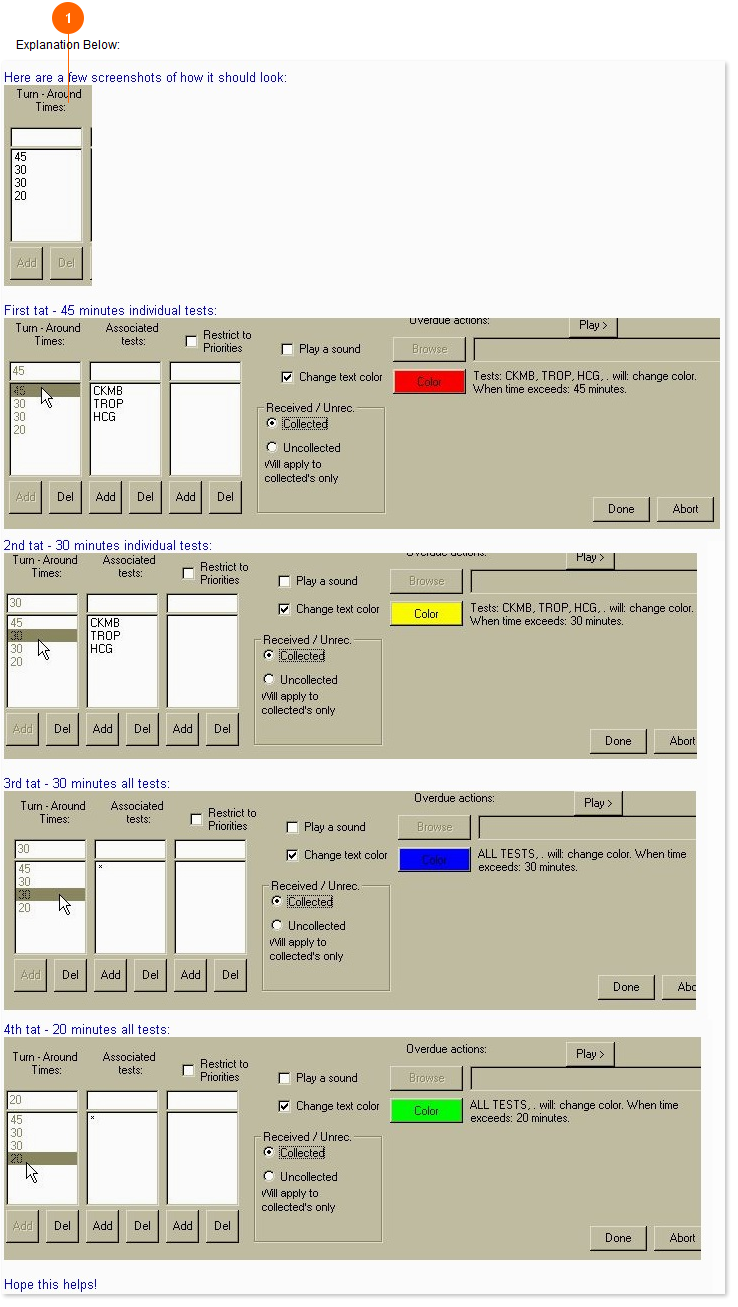
The staff wants specific order codes:
TROP, CKMB, HCG to turn YELLOW @ 30 Minutes; RED @ 45 Minutes AND, they want ALL OTHER order codes to:
turn YELLOW @ 20 Minutes; RED @ 30 Minutes
The thing is that you need to define the TAT's IN A CERTAIN ORDER*, for it to behave they way you want it to. What happens is that when a test matches a TAT, the program stops looking at the other TAT's down the line, so you should have your most restrictive TAT's defined first on down to the least restrictive. In your case you should define the 45-minute, trop-ckmb-hcg tat first, then the 30 minute, trop-ckmb-hcg second. THen define the 30 minute-all test tat, and finally the 20 minute-all test tat.
So in a nutshell: -The code stops evaluating a test on the first matching TAT definition.
-Define the longest TAT'S, with specific tests first (you don't want a 60 minute old Cardiac turning blue because it was found to exceed the 30 minute TAT when what you really wanted was for it to turn yellow because it exceeds the 45 minute TAT)
-Define shorter TAT's, with specific tests next.
-You can define some TAT's that apply ALL Tests, this should come after the specific test TAT's so it won't override them.
-Again if you have multiple, all test TAT's define the longest TAT's first and then the shorter ones.
*In the current version (1.65) TAT code has been rewritten that should allow you to put TAT’s in whatever order. However the issue still seems to come up when using the asterisk * 'all test' matching on more than one TAT. I advise adding TAT’s as you desire without regard to their order, and if they do not behave as you expect, refer to this example.
